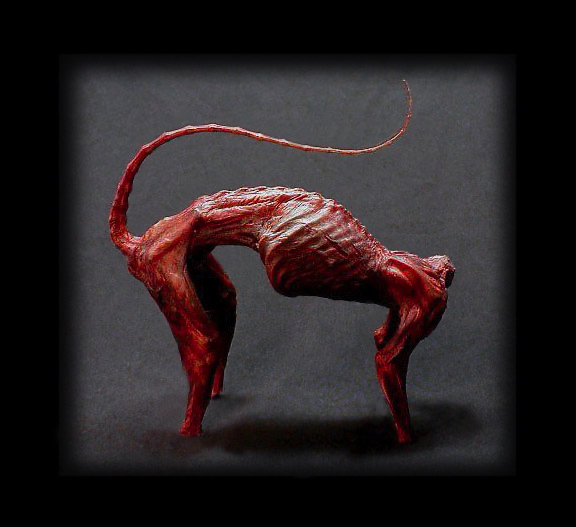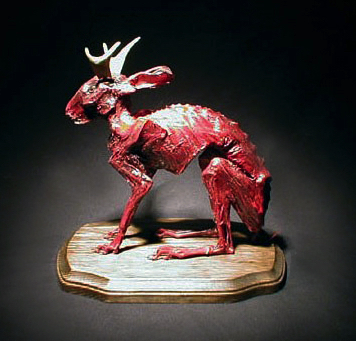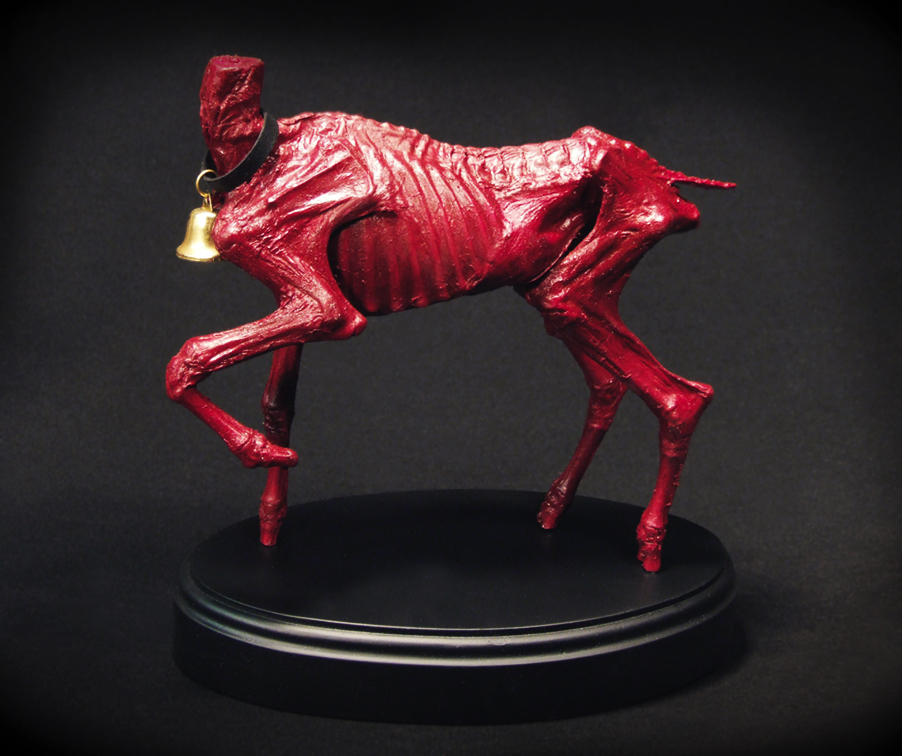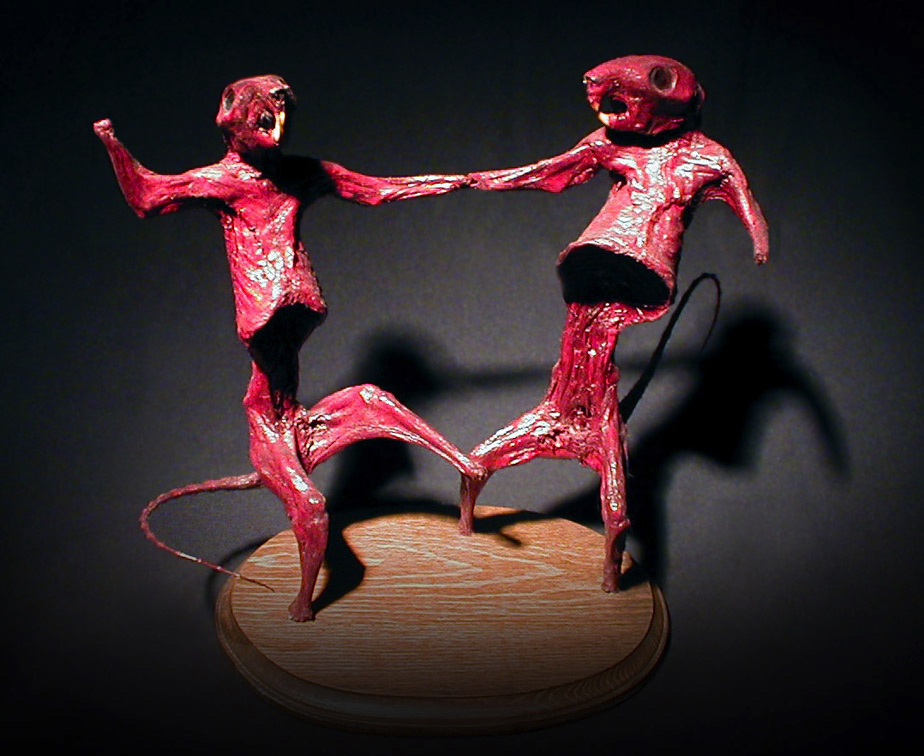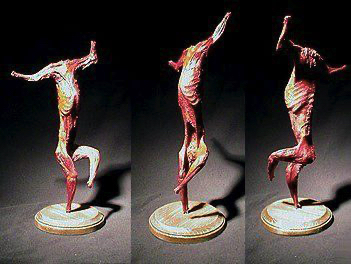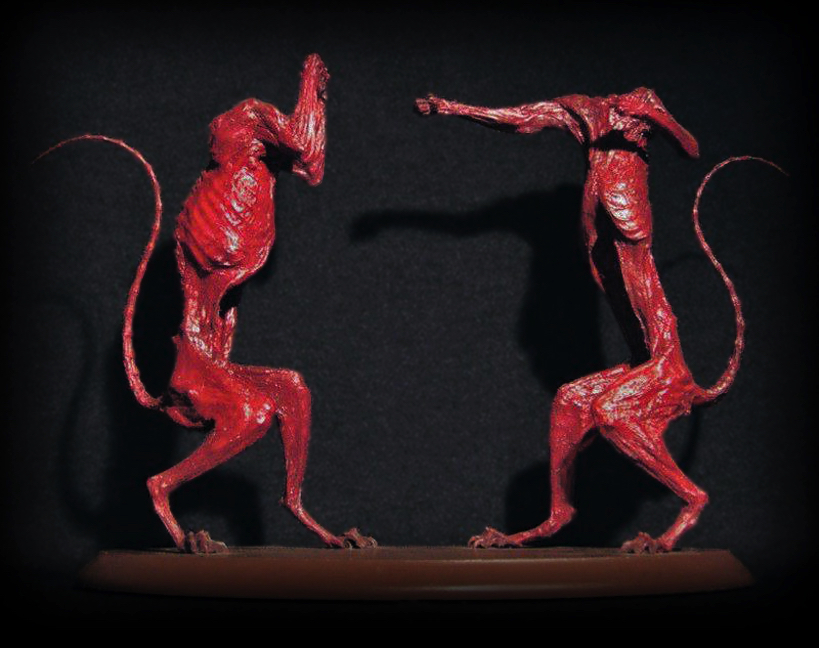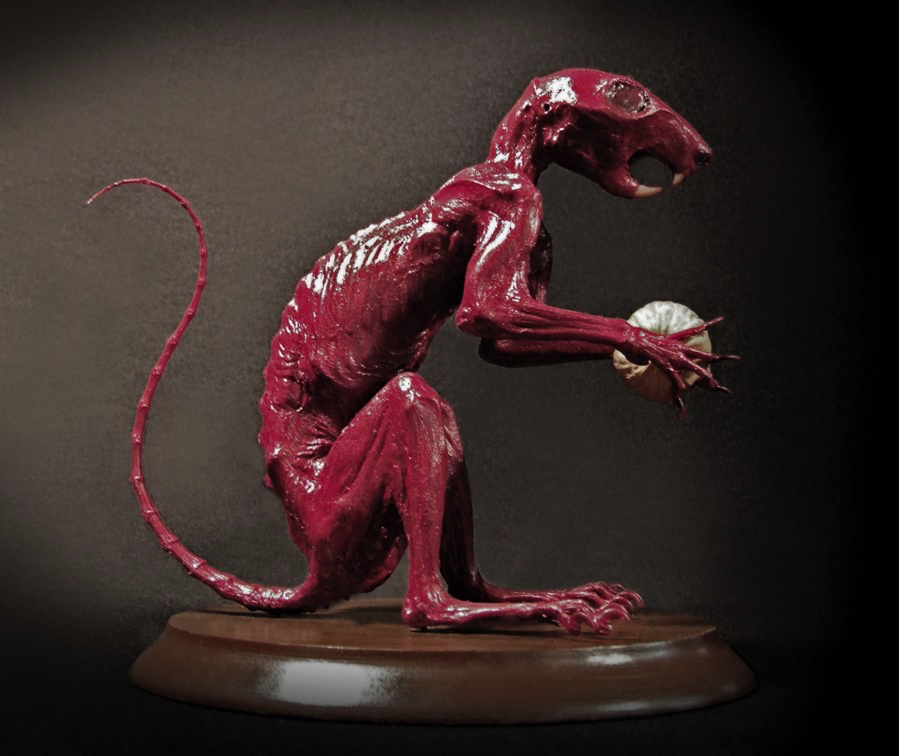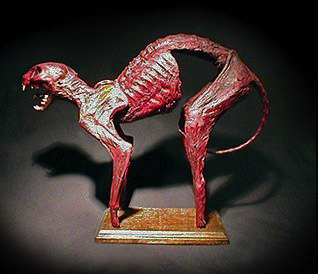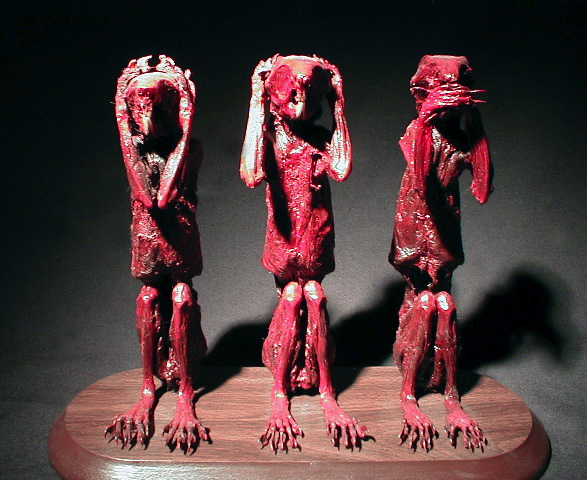
Esoteric esodermy; Sculpture made from the anatomical portion of an animal that is normally discarded during the taxidermy process, which is then preserved and presented in a lifelike pose that mimics conventional taxidermy. "Esodermy" is the term Brewer coined to describe this work. The word is drawn from ancient Greek; "eso" means "within", and "dermy" refers to the dermis (skin). Esodermy translates to "within skin". Displays made from preserved cadavers were popularized by the 18th century anatomist Honoré Fragonard, whose écorchés are currently being emulated by Gunther von Hagens in his "Body Worlds" exhibit. Brewer's Esodermy is a continuation of the exploration of the beauty of internal anatomy. Her work has been governed by the ethical and environmentally responsible use of animals since she began working with them 25 years ago and mandates nothing that was once living shall be taken for granted. Repurposing the carcass of a skinned animal is unheard of in the world of conventional taxidermy, the remains are traditionally discarded. Brewer's unorthodox recycling practice is what makes these pieces pioneering and why they have attracted attention. Her notoriety has encouraged other artists working with animal materials to adopt her "waste not want not" no-kill philosophy, which has broadened the appeal of the genre and attracted people who were once adamantly opposed to taxidermy due to ethical concerns.
